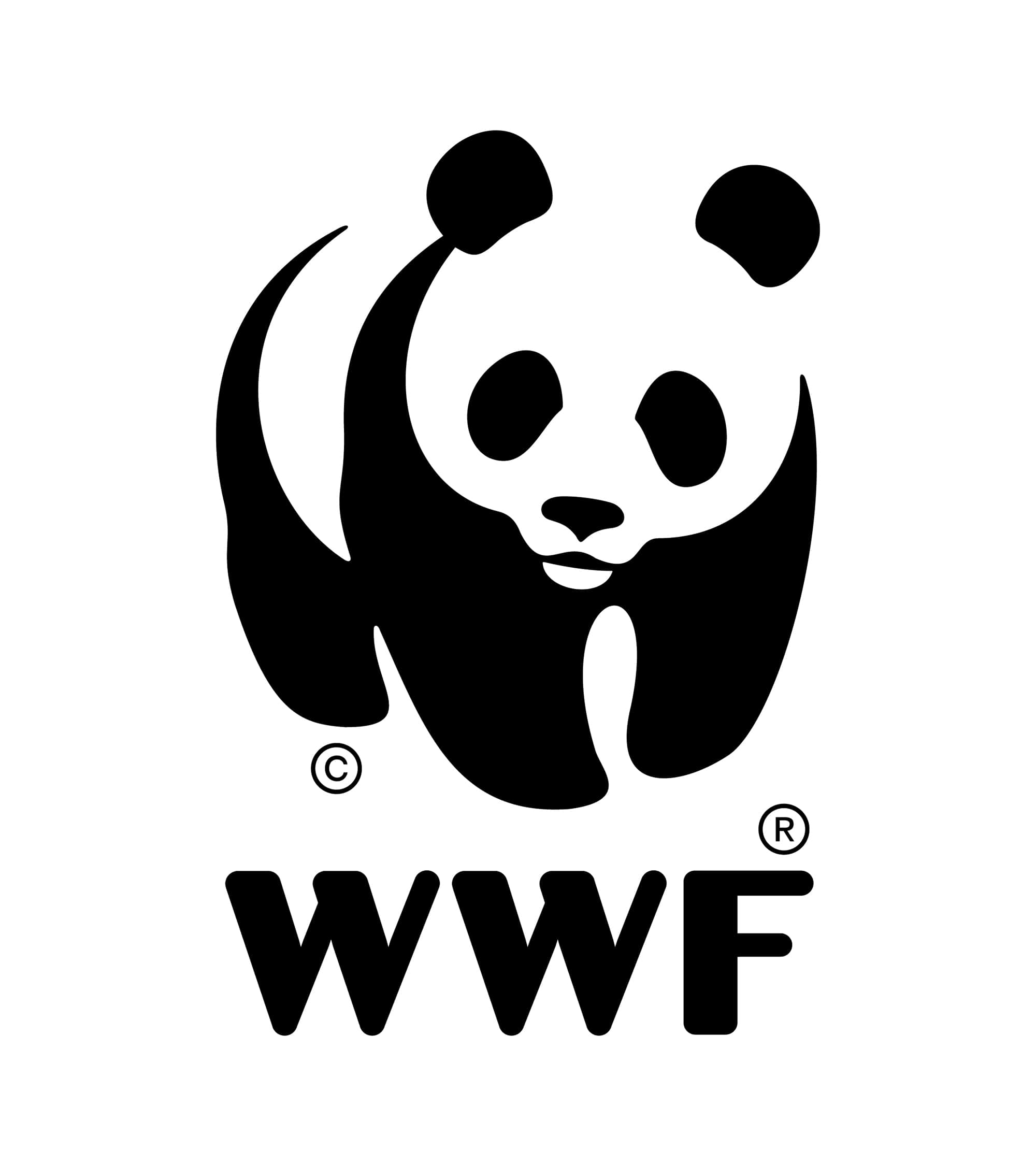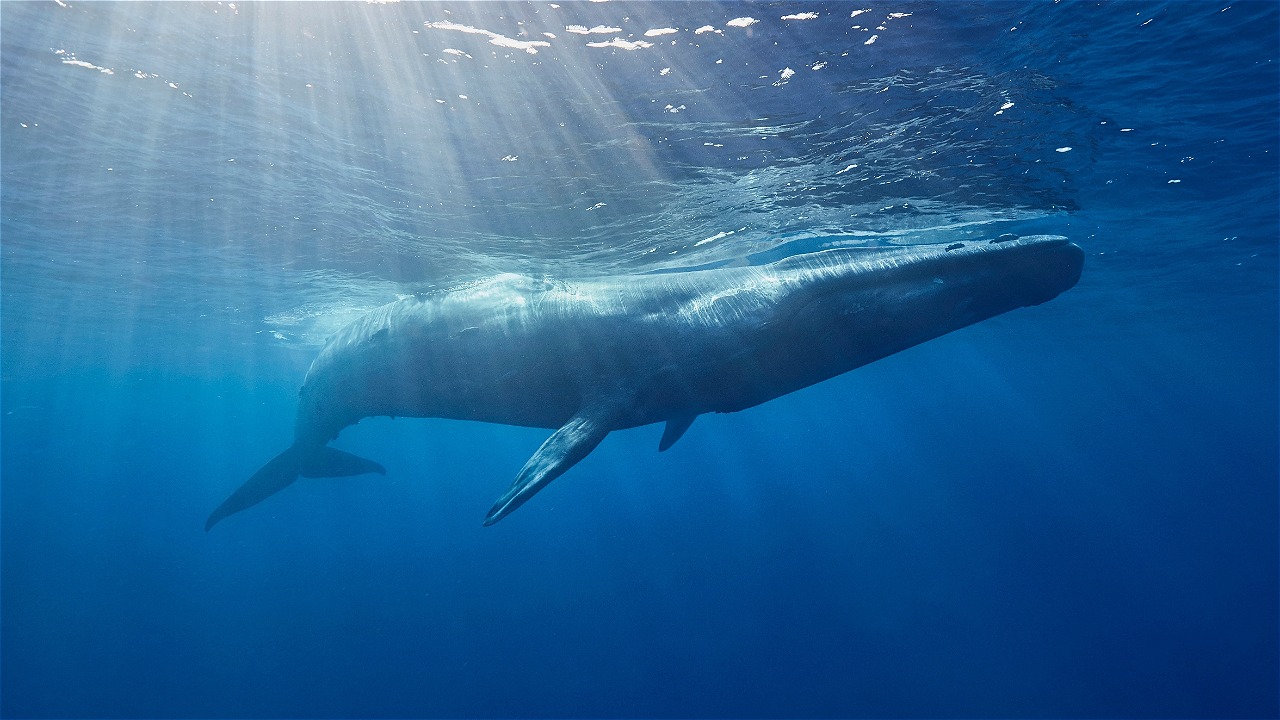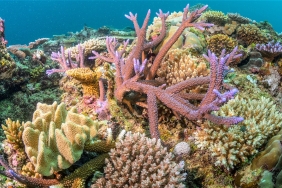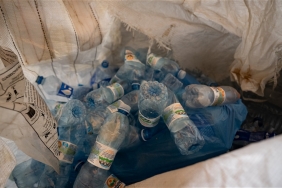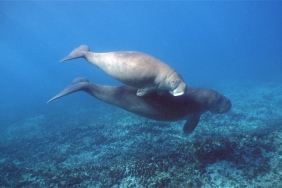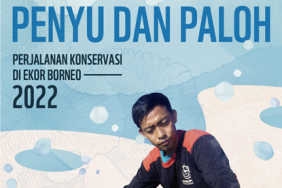RAMADAN WHALE IN PEARL BAY-ALOR
Dwi Ariyogagautama or who is familiarly called Yoga has been working at WWF Solor Alor Project as Fisheries Officer for almost 3 years. Together with other WWF teams, he tries to develop responsible and sustainable fisheries, especially tuna fisheries. This Diponegoro University Marine Science graduate is active in the Marine Diving Club (MDC) scientific diving club.Profile...
By Dwi Ariyogagautama
Last August 3, 2011 at 17:00 WITA, 4 whale spouts were seen, 3 large and 1 small. The first location was seen just 100-200m in front of the WWF-Indonesia Solar Project office in Mutiara Bay - Alor-NTT Regency. The coordinates are: LS: -8,22463369, EAST 124,53206501. Many people saw this rare event, not only WWF staff but also local residents and tourists who happened to be at the port of Kalabahi in the framework of Sail Wakatobi.
It is estimated that the depth of this bay is above 30m, and the whale was swimming around a floating bagan. We were able to record the whale at a distance of about 50m while breathing (breathing), the description that we could see was that its ±2m wide back had a black color and there were white spots. The single spout is 5-6m high for large whales and ±2m for small whales. Before spouting, a bulge is seen first, then accompanied by a spout, 4-5 seconds later the dorsal fin is seen on the surface (total back is seen on the surface 7 seconds), estimated that the visible back is 4-5 m long.
Based on our observations, the type of whale that is closest to these characteristics is the Blue Whale (Balaenoptera musculus). The whales were swimming in groups with calves. Until 18:00 WITA 2 whales were still seen around the floating chart (1 large whale and 1 small whale), while the other 2 had swum away from the beach.
The Blue Whale itself is included in one type of marine biota that is included in the Red list, which is the status of endangered (endangered) based on the IUCN (2000). The total worldwide population was estimated to be between 5000-12,000 in 2002 (Wikipedia).
Existing threats can also affect existing populations, such as being hit by ship propellers, busy shipping activities in their migration sites that can interfere with communication between Blue Whales, accumulation of chemicals such as Polychlorinated biphenyl (PCB) in the body of whales has also been found, and also climate change is also a threat to their distribution patterns and food supply. While the threat to the existence of blue whales that we found in Mutiara Bay is the dense shipping activity of cargo ships and inter-island passenger ships, then the next threat is feared when the water recedes.
Until August 4, 2011, the whale was still seen in the same location. Currently, the waters of Alor Regency have become a reserve area for the Regional Marine Conservation Area (KKLD) of Alor Regency since it was declared in Regent Regulation Number 6 of 2009 for the expansion of the Pantar Strait KKLD area into the Alor Regency KKLD covering an area of 400,083 ha. The waters of Alor Regency are one of the migration routes of protected marine animals, such as marine mammals (cetaceans).
Based on data from Benjamin Kahn (2002), there are 7 types of whales and 5 types of dolphins that cross the waters of Alor district, and based on observations of the WWF-Indonesia Solar Project there are also Duyung (Dugong dugon). Blue whales have been identified in this location not only as a natural potential that can raise the name of Alor Regency, but efforts to protect its existence are also very important, through this Alor MPA it is hoped that all the natural potential of the sea can be managed properly for the benefit of the welfare of the people of Alor Regency.
